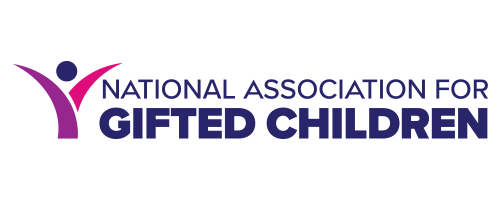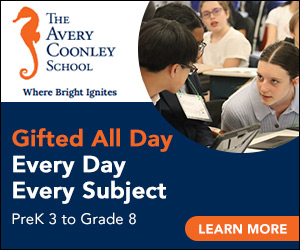Where Do I Start?
By Karen Cristalli
NAGC asked its 2024 Teachers Summit (held online February 13-14, 2024) speakers to share additional information about their presentations via the NAGC Blog. Karen Cristalli presented during that event on Gifted Education 101.
I was thrilled to share my journey into the world of gifted and talented education as part of my workshop at the recent NAGC Teachers Summit. As a lifelong learner, a neurodiversity advocate, and a dedicated teacher and coordinator, scouting and nurturing potential in every student has motivated my pursuit of higher learning, with my dissertation focus being gifted education.
As I began my dissertation on gifted education, I dove deep into researching various aspects of it. The more I researched, the more I couldn't help but reflect on my journey, which started over a decade ago. Being tasked with building a district-wide gifted and talented program from the ground up with no background in the area and no prior training proved to be quite the challenge. However, being a lifelong learner taught me that you can always start by asking questions and looking to those with greater expertise and experience, and so that is exactly how I started. I got involved with my county consortium and learned from the wonderful people in that group. That journey has come full circle as I am the copresident of that consortium and a mentor to a first-year gifted teacher in my district's program.
As I reflected on where I started, I looked back at the five glaring things I wish I had focused on when I began in gifted education.
- The definition of giftedness and all the nuances and variations of that definition.
- The characteristics of gifted students, and how stereotypical characteristics can sometimes be misleading.
- Why schoolwide enrichment is so important to your gifted program.
- How universal screening can be a game changer for identifying gifted learners.
- Differentiation for gifted learners is so important to all of the content in which they receive services.
Using these five items as a guideline, this is where I started the conversation with my first-year gifted teacher this August. Unsurprisingly, she also wondered what made up a gifted student and how to spot them in the classrooms. While there is no universal definition of giftedness, we looked to the NAGC Position Statement on giftedness. NAGC defines giftedness as “Students with gifts and talents perform - or have the capability to perform - at higher levels compared to others of the same age, experience, and environment in one or more domains. They require modification(s) to their educational experience(s) to learn and realize their potential.”
In its position statement, NAGC specifically details that students with gifts and talents:
- Come from all racial, ethnic, and cultural populations, as well as all economic strata.
- Require sufficient access to appropriate learning opportunities to realize their potential.
- Can have learning and processing disorders that require specialized intervention and accommodation.
- Need support and guidance to develop socially and emotionally as well as in their areas of talent.
- Require varied services based on their changing needs. (para. 2)
Understanding the definition of giftedness helps all educators create a more supportive space for gifted learners by allowing them to better identify and support gifted students because gifted students who have unique learning needs may only sometimes be immediately recognizable. It also prevents misconceptions and stereotypes from occurring. Gifted students are often portrayed in unrealistic terms in our media, and educators knowledgeable about diverse characteristics and the definition of giftedness can tailor their teaching strategies and content to engage students at the appropriate level of their ability.
It also allows educators to advocate for students in their classrooms or schools who may not immediately be on the radar of the gifted coordinator or administrator in your building. Familiarizing your entire school community with what to look for can help develop more effective and equitable programming and policies. Finally, it may inspire educators in your school community to take an interest in professional development for their gifted learners.
Using this definition and your state guidelines can be an excellent starting point for developing your program or understanding what giftedness can look like in the classroom. To learn about this more in-depth, consider registering for the On Demand Teachers Summit and viewing my session, Gifted Education 101, where I introduce gifted education, focusing on the needs of gifted and high-potential students.
The workshop highlights the following topics:
Unlocking Insights:
- Reflect upon and discuss definitions and characteristics of gifted and talented learners.
- Gain a deeper understanding of the unique cognitive, social, and emotional needs of gifted students.
- Uncover strategies to create a supportive and challenging learning environment.
Identification and Assessment:
- Explore various methods and strategies for identifying gifted students.
- Understand the importance of employing multiple measures in the assessment process.
Differentiating Instruction:
- Discover practical strategies for differentiating instruction within the general education classroom.
- Explore ways to provide appropriate levels of challenge and enrichment for gifted students.
If you’re unable to participate in the On Demand Summit, here are some resources to get you started on where to better learn about the definition of giftedness and the characteristics to look for in your classroom.
- What Is Giftedness?
- A Definition of Giftedness That Guides Best Practice
- Gifted Traits and Characteristics
- Key Considerations in Identifying and Supporting Gifted and Talented Learners
- Neurodiversity and Gifted Education
- What Is Neurodiversity?
Additional Resources:
- Baumer, N., & Frueh, J. (2021, November 23). What is neurodiversity? Harvard Health. https://www.health.harvard.edu/blog/what-is-neurodiversity-202111232645
- Heacox, D., Cash, R. M., & Gentry, M. L. (2020). Differentiation for gifted learners: Going beyond the basics. Free Spirit Publishing.
- Tomlinson, C. A. (1995). How to differentiate instruction in mixed ability classrooms. Alexandria, VA: ASCD.
Karen Cristalli, M.Ed., coordinates the K-12 Gifted and Talented program in Harrison, NJ. She is also pursuing her doctorate with a focus on gifted education. In addition to her role as co-president of the Hudson County Gifted and Talented Consortium, Karen is a member of the Intersectionality of Cognitive and Affective Needs Subcommittee for the Strengthening Gifted and Talented Education Act Committee.


